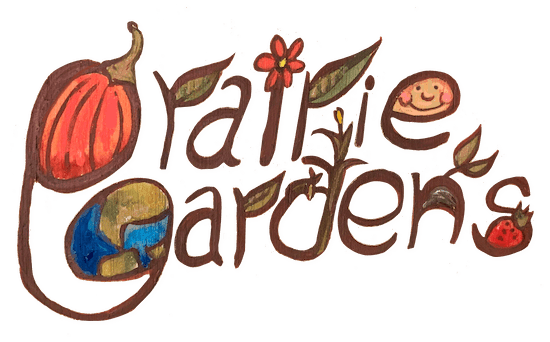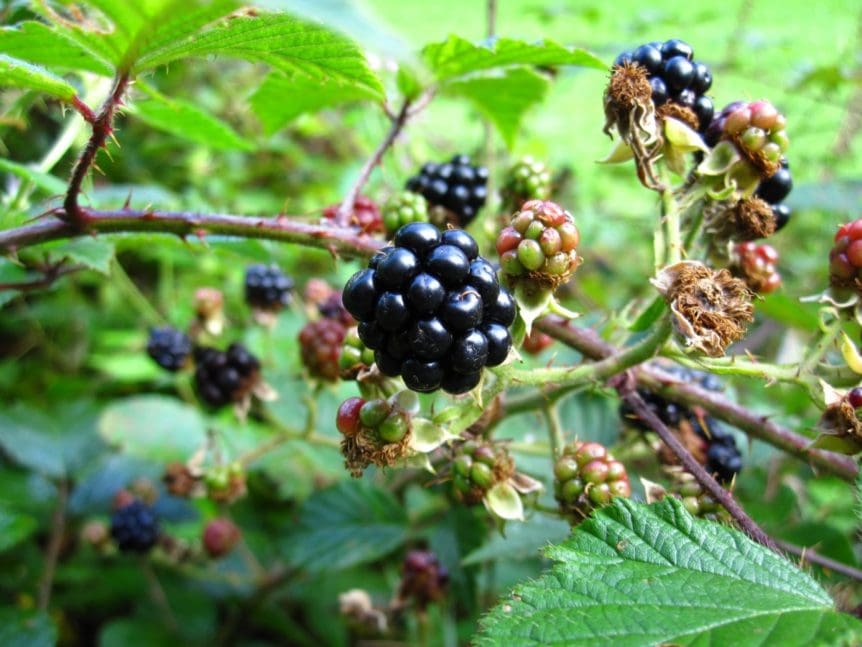How to Choose Plants Hardy to Your Zone
Our farm and tree nursery, Prairie Gardens, is dedicated to producing plants that grow on the Canadian Prairies – which range from zones 0 (hardy to Alaska) to zone 4 (hardy in Edmonton). Our tree nursery was established in 1956 – with almost 70 years of experience, naturally, we get a lot of questions about what is hardy enough to grow here! We use Agriculture Canada’s plant hardiness map – which provides insight about what we can grow, and where, across Canada. Most recent update: 2024.
Explore plant hardiness by municipality >
Check out plant lists by area >
It combines information about a variety of climatic conditions across the entire country to produce a single map. The original map was developed in the 1960’s for trees and shrubs. Agriculture Canada has now produced several updates to this map, using extensive climate data and modern interpolation techniques.
Canada’s Plant Hardiness Zones

View Full Sized PDF on http://planthardiness.gc.ca/images/PHZ_2014_CFS_Map.pdf
Extreme Minimum Temperature Zones Comparison to the American Model of Plant Hardiness
Agriculture Canada has also produced maps that show plant hardiness zones for Canada based on the American USDA extreme minimum temperature approach. The Canadian Hardiness Map and the USA hardiness map are not the same, and can not be used interchangeably. Here is the translation from the USA model.:
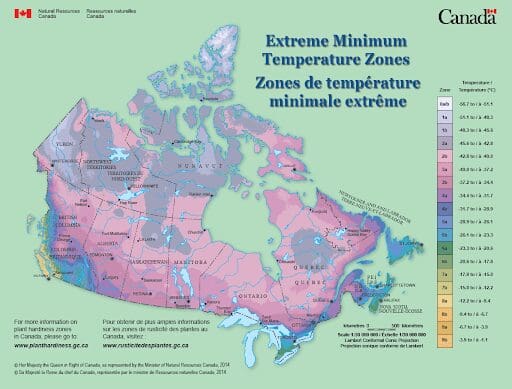
View the Full Sized PDF on http://planthardiness.gc.ca/images/PHZ_2014_Map_Side_B.pdf
If you are just learning about what fruits grow here – there are hardiness zone which to know about. When it comes to choosing a hardy plant (apples, berries, apricots, plums, tart cherries, pears, perennials, etc.), it’s best to choose one adapted to their hardiness zone, or any colder zone. But not a warmer zone!
For example, if you live in zone 3, you should choose plants from zone 3 or even colder zones: 0, 1, 2. If you live in zone 3, plants from zones 4 and up will likely not work for you. It’s not very complicated, and it does usually hold true! In urban areas, like Edmonton, or Medicine Hat – you can grow things for zone 4, 4a or even 4b with the right micro-climate. But if you are rural, and in the countryside, you likely won’t have success “pushing the zone” unless you take active measures to be a gardener beyond zones. As my Auntie, Anne Vale, horticulturalist used to say, “No gardener, no garden!”.
For experienced gardeners – it’s fun to push the boundaries – and with adaptive growing practices, like mulching, extreme pruning, and even pinning the branches to the ground under the snow, and mulching with wood shavings or leaves, so you can grow out-of-zone plants like blackberries or by using extreme pruning methods, or even peaches!
Check out this article:
Growing Peaches on the Prairies – with Proper Overwintering Techniques.
However, importantly, what is less known for beginner gardeners, is that the Agriculture Canada hardiness zone system does not match the one used in the United States, that of the USDA (United States Department of Agriculture).
The USA system only considers the minimum temperature in a given region, not the duration of the minimum temperature. But when temperatures drop to -15C / (5F) for one night, it doesn’t affect a plant nearly as much as when the temperature stays at -15C / (5 F) for a week or a month. The Canadian hardiness zone map reflects this detail and also other factors, like snow cover and wind chill, giving a more realistic picture of local conditions.
The result of these differences is that there is about a one zone difference between the two systems. For example, a plant labelled with the USDA hardiness zone 4 is actually a zone 5 in the Canadian system. Here is a chart that compares the two systems:
Comparing the USDA and Agriculture Canada Hardiness Zones
| USDA Zone | Canadian Zone |
| 0 | 1 |
| 1 | 2 |
| 2 | 3 |
| 3 | 4 |
| 4 | 5 |
| 5 | 6 |
| 6 | 7 |
If you find American nurseries online, or buy seeds, a gardening magazine or a gardening book, just remember to mentally add a number to any zone that is indicated.
Tam Andersen, horticulturalist and owner of Prairie Gardens, has been gardening for about 60 years, since she was five years old and her Mum helped her with growing her first patch of pumpkins alongside the vegetable garden. While she was born and raised in southern Alberta., she’s been in the Edmonton area for about 40 years. In that time, she’s noticed that the region is seeing more frost-free days, “meaning it’s a been considerably hotter and drier in the spring and definitely the falls seem to be warmer and longer.” “When I first started gardening here on this location, I would consider anything after about, you know, the 5th of September, you could get a frost. Now we’re getting an extra month,” she said. In the 2024 update of the Canadian Hardiness Zones – Edmonton has moved up to a zone 4 from a zone 3.
Tam also notes that conditions can change quickly throughout the region in more dramatic swings than we used to see. This fall and winter, for example, we enjoyed Okanagan temperatures until late January of 2024, hovering around -5C, until the dreaded “Siberian High” swept in, and temperatures plummeted to a not-so-balmy -50C. Not kidding! Actually was -50C on the temp gauge. And -40C it is the same as -40F.
What the “Box Stores” Don’t Know
Many Canadian box stores use, without ever stating it, the American hardiness zone system. I can’t say whether they do this on purpose or if they simply don’t know they’re making a mistake, as they are importing American grown nursery plants, which are pre-labeled and priced at the nurseries from whence they came.
The result is that many plants labels seen in Canadian box store garden centers are misleading: they are using the American cold hardiness rating, which is a full zone warmer than the Canadian system. This causes much confusion and disappointment amongst Canadian gardeners, who have now planted the wrong plant in the wrong place.
This is not a minor problem: each year, due to misleading information, millions of plants are planted in areas where they are not hardy and therefore either die over the winter or are severely damaged by the cold. Indeed, some plants in Canada are almost always sold with the wrong zone. Here are a few examples in particular to be careful with:
Blackberries
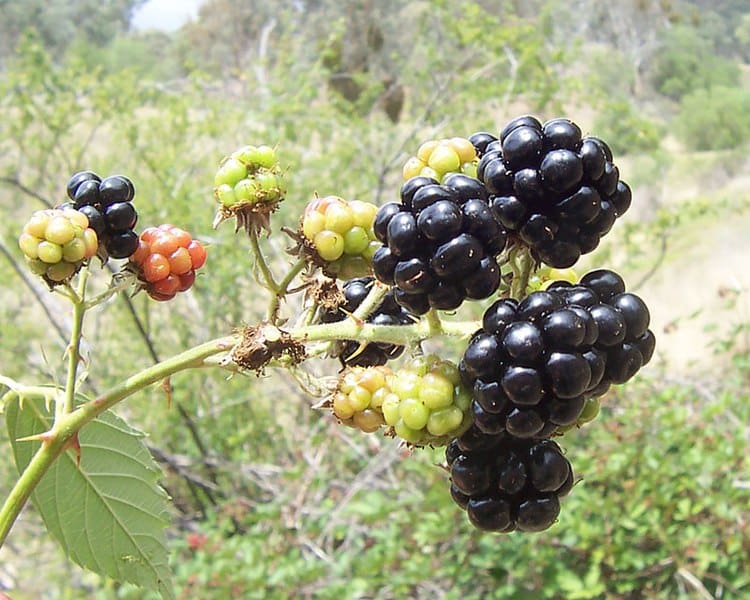
Black Satin Blackberry
Zone usually indicated: 4 – Actual Canadian hardiness zone: 5 (Exceptions, Wild Blackberry actually at zone 2, and Balsor Blackberry actually a zone 4)
Mulberry
Zone usually indicated: 4 – Actual Canadian hardiness zone: 5 (Exception – there is a White Mulberry growing at Olds College)
Kousa Dogwood (Edible Berried Dogwood)
Zone usually indicated: 5b Actual Canadian hardiness zone: 6b Absolutely not hardy in Edmonton.
Combination Graft Pears (on a Ure pear root stock).
The root stock is a hardy wild Ussurian Pear, (zone 2), but the grafted limbs are all zone 5 pears hardy to the Okanagan in BC, but not hardy in Edmonton. The grafts all die out, leaving the unsuspecting gardeners with the hard, green ping-pong ball of a pear that is the Pyrus ussuriensis and while it is a good pollinator, not a highly desirable fruit.
Sweet Cherries
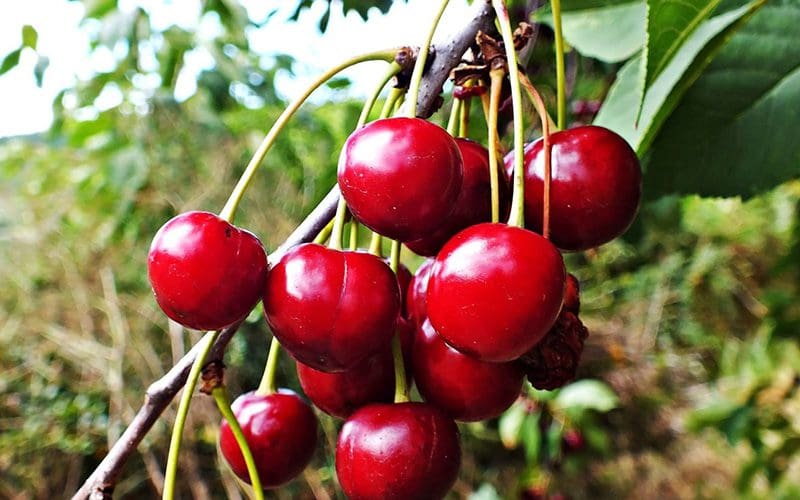
Zone usually indicated is a zone 4 (in Washington or Oregon). Actual Canadian hardiness zone 5-6. Grow Tart Cherries in Alberta; they are actually hardy to zone 2-3.
